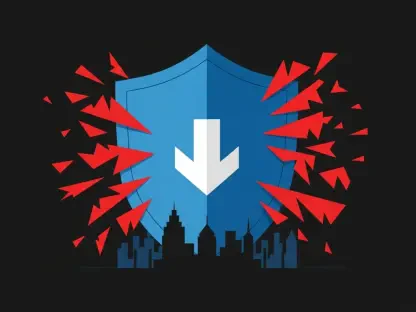Introduction
The multifamily housing sector, a cornerstone of affordable living for millions, faces an escalating crisis that could reshape access to rental properties across the nation, with rising insurance exclusions and stricter lender requirements creating a perilous gap. This situation leaves property owners—especially smaller ones—struggling to secure coverage that meets regulatory standards, jeopardizing individual deals and threatening the broader stability of housing markets. The purpose of this FAQ is to unpack the complexities of these insurance challenges, exploring why they matter and how they impact stakeholders. Readers can expect clear answers to critical questions, from the root causes of coverage gaps to potential solutions, providing a comprehensive look at an issue with far-reaching implications for landlords, tenants, and policymakers.
This discussion aims to shed light on the systemic forces at play, including the role of government-sponsored enterprises like Fannie Mae and Freddie Mac, as well as the insurance industry’s response to mounting claim costs. By addressing key concerns, the goal is to equip readers with actionable insights into navigating or advocating for change in this strained ecosystem. The scope covers financial burdens, legal underpinnings, and collaborative strategies, ensuring a holistic understanding of a problem that could redefine housing affordability.
Key Questions on Insurance Gaps in Multifamily Housing
What Is Causing the Insurance Gap in Multifamily Housing?
The insurance gap in multifamily housing stems from a fundamental mismatch between what lenders demand and what insurers are willing to provide. Government-sponsored enterprises such as Fannie Mae and Freddie Mac have tightened property liability coverage requirements to protect their interests, mandating extensive policies that address a wide range of risks. However, insurers, grappling with soaring losses from claims, are increasingly excluding high-risk areas like sexual abuse, firearm incidents, and habitability issues from standard policies or capping them at minimal levels.
This divergence has grown as the insurance market reacts to large payouts, often awarded regardless of a landlord’s negligence. The result is a landscape where property owners must either find alternative coverage at exorbitant costs or risk failing to meet lender standards. Smaller operators, lacking the resources to absorb these expenses, are particularly vulnerable, highlighting a growing inequity in the sector.
Why Are Smaller Multifamily Owners Hit Hardest by These Gaps?
Small to mid-size multifamily owners face disproportionate challenges due to their limited financial flexibility compared to larger landlords. When insurers exclude certain risks, lenders often require owners to place significant sums—sometimes exceeding a million dollars per property—into escrow accounts to cover potential liabilities. For smaller operators, these costs can render a property unviable, pushing them toward financial distress or even foreclosure.
Larger landlords, by contrast, often have the capital or negotiating power to secure better terms with insurers or absorb additional expenses. This disparity creates a competitive imbalance, where the ability to sustain operations increasingly depends on scale. The ripple effect extends to tenants, as smaller properties frequently serve lower-income communities, meaning that housing affordability suffers when these owners are squeezed out of the market.
How Do Systemic Issues Like Litigation Contribute to the Problem?
Beyond insurance and lending policies, systemic issues such as litigation trends play a critical role in exacerbating the coverage gap. A litigation-heavy environment, where large settlements are common even in cases of questionable fault, drives up claim costs for insurers. This pattern incentivizes legal action over resolution, inflating the frequency and severity of payouts that carriers must cover.
As a response, insurers tighten their offerings, either by excluding high-loss risks or raising premiums to unsustainable levels. Without reforms to balance accountability with fairness in the legal system, this cycle persists, further limiting coverage availability. Experts argue that addressing these root causes through tort reform is essential to stabilizing the insurance market and easing pressures on multifamily owners.
What Short-Term Solutions Can Property Owners Pursue?
Property owners facing insurance gaps have several short-term strategies to consider, though each comes with limitations. One approach is securing lender waivers by demonstrating robust risk management practices, such as implementing strict loss control measures or securing vendor indemnification agreements. These waivers can temporarily bypass stringent coverage mandates, but they require meticulous documentation and are not guaranteed.
Another option involves purchasing standalone policies for specific risks, such as sexual abuse or firearm-related incidents, from specialized providers. While innovative, these policies often carry high costs and may not be accessible to smaller owners with constrained budgets. Additionally, repositioning brokers as strategic partners can help, as they can leverage data and communication to align lender and insurer expectations, though this depends on the broker’s expertise and relationships.
What Long-Term Changes Are Needed to Address Insurance Gaps?
While short-term fixes provide some relief, long-term stability in multifamily housing requires systemic change. Tort reform stands out as a critical need, aiming to curb the litigation culture that fuels high claim costs and prompts insurers to retract coverage. Adjusting legal frameworks to prioritize fair resolutions over excessive settlements could encourage insurers to offer more comprehensive policies at reasonable rates.
Collaboration among stakeholders—landlords, lenders, insurers, brokers, and policymakers—is equally vital. A shared framework for managing risk and liability could bridge current divides, ensuring that coverage requirements align with market realities. Without such unified efforts, the viability of multifamily deals remains at risk, with broader consequences for housing stock and community stability.
Summary of Key Insights
This FAQ has explored the pressing issue of insurance gaps in multifamily housing, highlighting the mismatch between lender mandates and insurer offerings as a central challenge. Key points include the disproportionate burden on smaller owners, who struggle with high escrows and premiums, and the role of systemic litigation trends in driving up claim costs. Short-term solutions like lender waivers and standalone policies offer temporary respite, while long-term fixes such as tort reform and stakeholder collaboration emerge as essential for sustainable progress.
The main takeaway is that these gaps are not merely financial hurdles but barriers to housing development and affordability, affecting tenants and communities alike. For deeper exploration, readers may consider researching industry reports on insurance trends or engaging with local housing policy discussions to understand regional impacts and advocacy opportunities.
Final Thoughts
Reflecting on the challenges discussed, it becomes evident that the insurance crisis in multifamily housing demands urgent attention from all involved parties. The stark inequities faced by smaller owners and the broader threat to affordable housing underscore a need for immediate action. Looking ahead, stakeholders are encouraged to prioritize collaborative initiatives, advocating for legal reforms and innovative risk-sharing models to prevent further erosion of the sector.
Property owners and concerned individuals are urged to assess how these gaps impact their specific situations, whether through rising costs or stalled transactions. Engaging with industry groups or policy forums offers a pathway to influence change, while exploring tailored risk management practices could mitigate immediate pressures. The road to resolution requires a collective commitment, ensuring that the foundation of multifamily housing remains intact for future generations.









